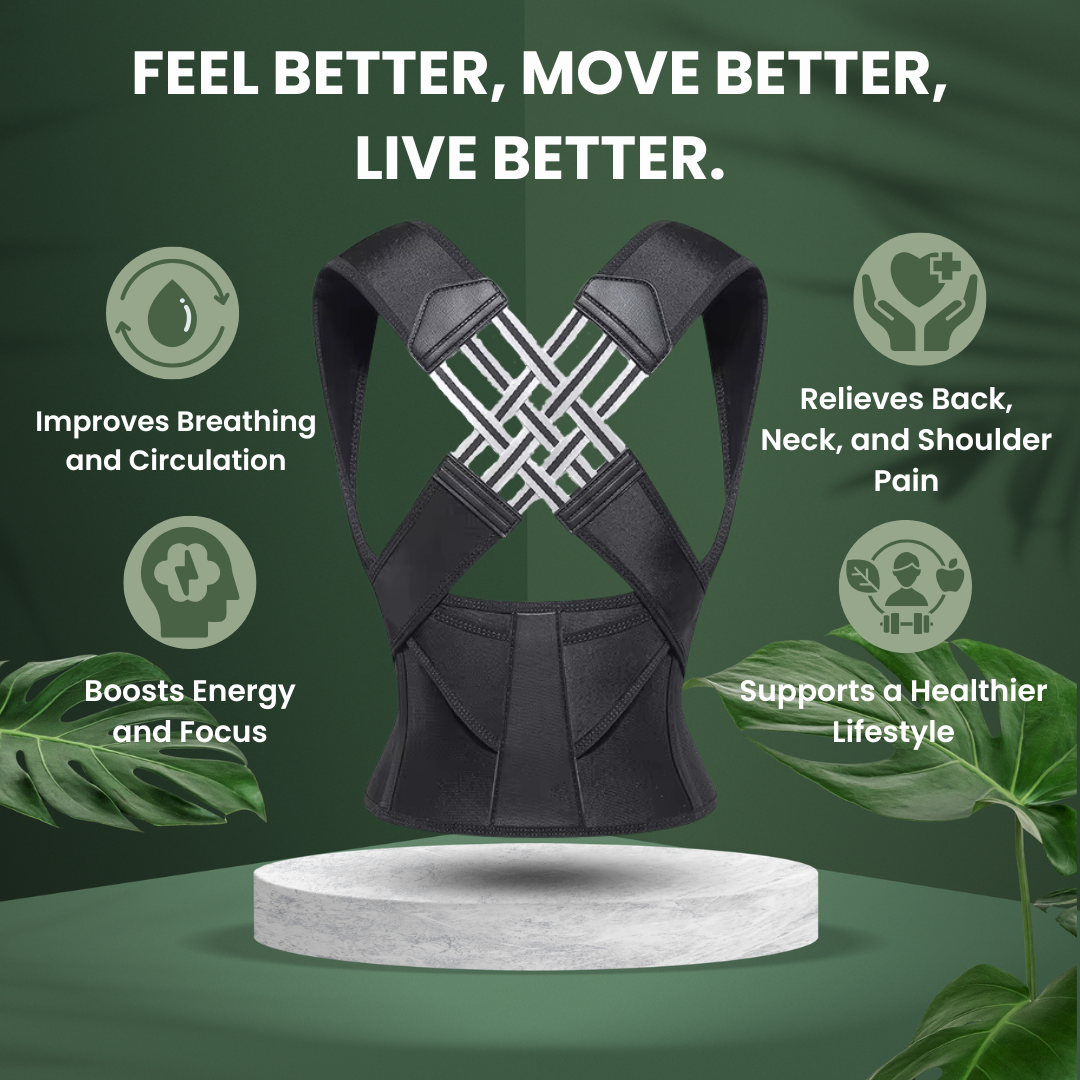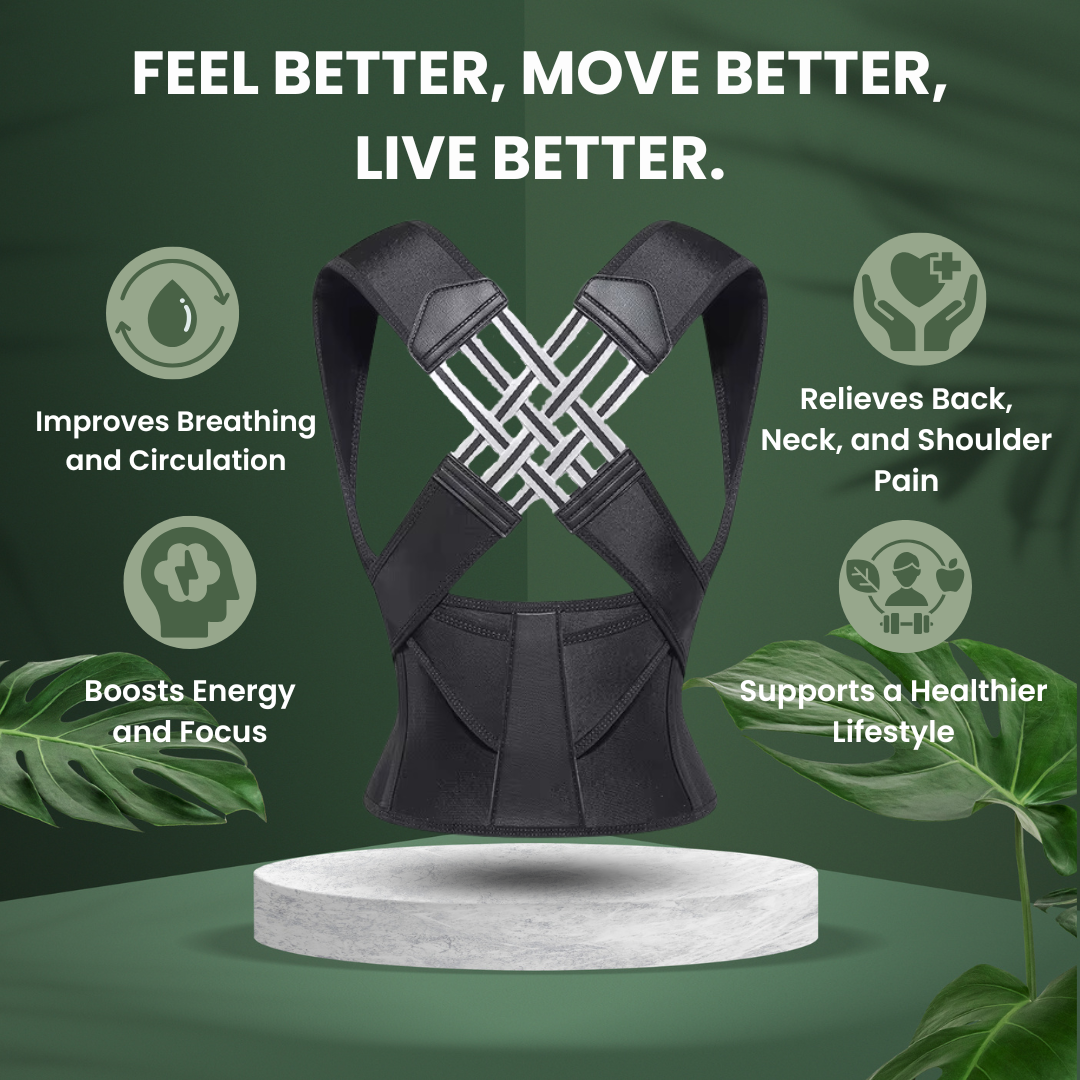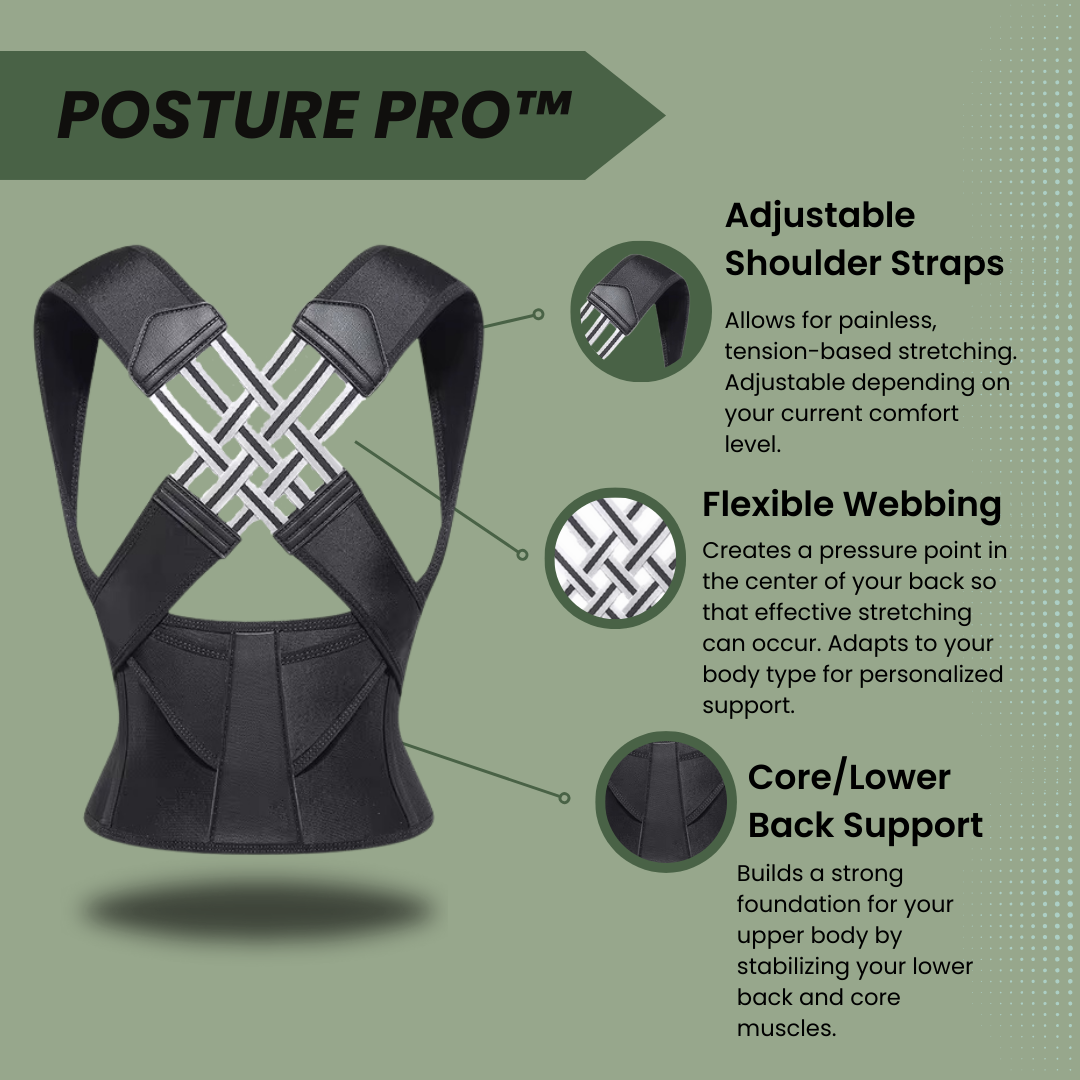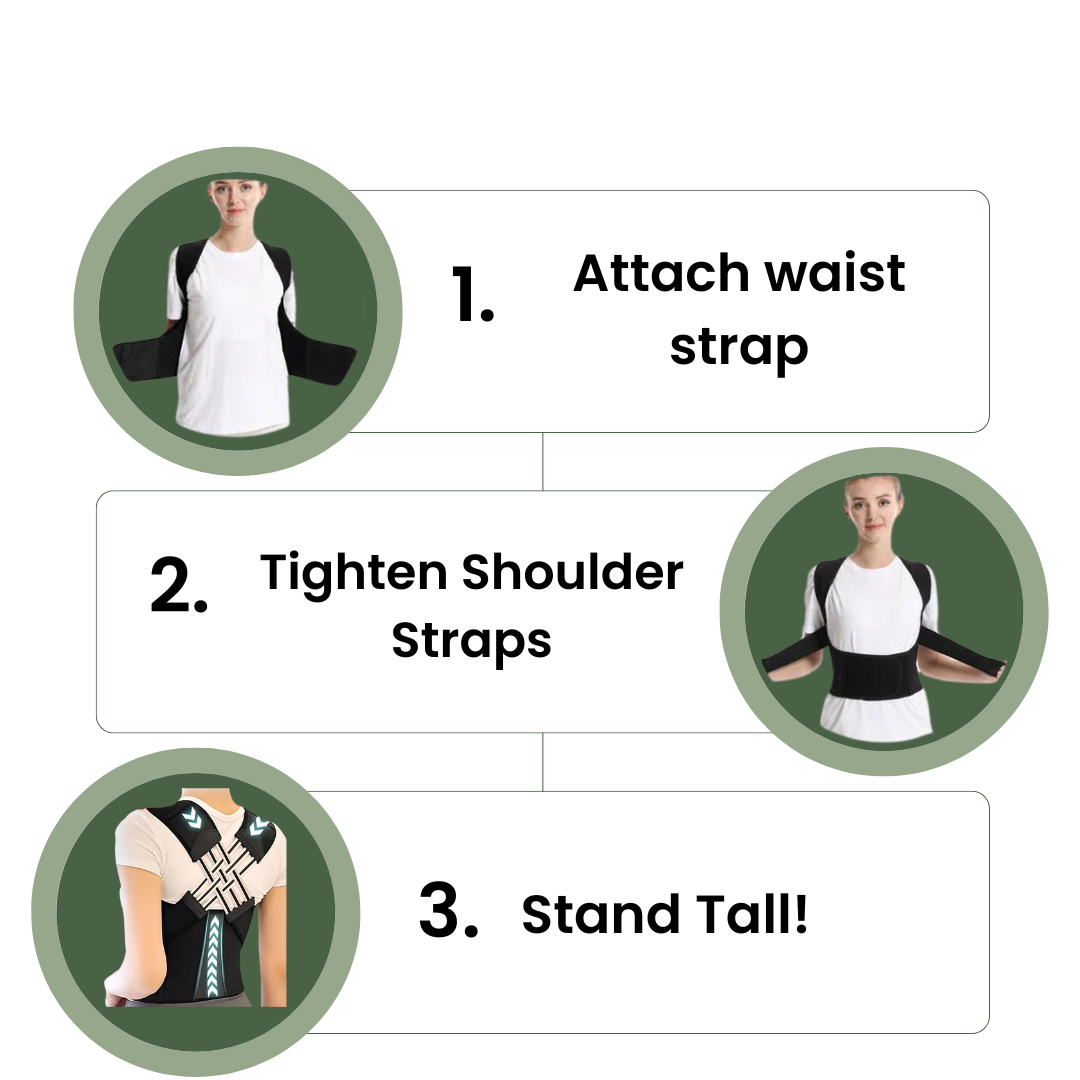Many people suffer from back pain and fatigue. One key fact is that how proper posture prevents injuries. This article will show you ways to improve your health by fixing your posture.
Keep reading to learn more!
Key Takeaways
- Proper posture minimizes stress on the body, preventing back pain and muscle strain.
- Good alignment supports musculoskeletal health, enhancing balance and flexibility.
- Maintaining correct posture reduces wear and tear on joints, particularly in the spine.
- Strengthening core muscles through exercises can promote better posture during daily activities.
- Adopting good posture habits helps avoid injuries and improve overall physical health.
Understanding the Impact of Posture on Our Health

Posture affects our overall health more than many people realize. Poor posture can lead to issues like muscle strain and joint pain, making it essential to pay attention to how we align our bodies.
Definition of posture
Posture refers to the alignment of our body while sitting, standing, or moving. It plays a crucial role in spine health and overall physical well-being. Good posture supports correct body alignment, reduces joint strain, and protects against injuries.
Maintaining proper posture can also minimize issues like back pain and muscle strain.
Poor posture can lead to complications such as rounded shoulders and spinal dysfunction. Over time, this misalignment causes wear and tear on joints and muscles. Correcting your posture helps maintain stability in the musculoskeletal system.
As a result, it contributes to better balance and flexibility throughout daily activities.
“Good posture is important for overall health; it acts like a superpower.”
Effects of poor posture on the body
Poor posture leads to various health problems. It causes back pain, spinal dysfunction, and joint degeneration. Slouching often creates rounded shoulders and contributes to a potbelly.
These complications arise due to muscle strain and injury in the lower back. Poor posture can also place added stress on ligaments that support spinal joints.
This strain can lead to chronic discomfort and may hinder overall physical health. Maintaining good posture acts as a safeguard against these issues. Strong alignment supports musculoskeletal health, prevents fragility, and reduces wear and tear on the spine.
Good body mechanics enhance balance and stability while exercising form properly protects against injuries like back pain prevention.
Importance of correcting posture
Correcting posture plays a vital role in maintaining overall health. Good posture reduces wear and tear on your joints, especially in your spine. It prevents back pain and spinal dysfunction by minimizing stress on the ligaments that hold spinal joints together.
By aligning the body correctly, you support your musculoskeletal system.
This alignment helps maintain flexibility and muscle strength too. A strong core also promotes correct body posture during daily activities and exercise. Improving your posture can lead to a reduction in back pain while enhancing mood and balance.
Prioritizing proper posture ultimately contributes to better spinal health and injury prevention.
How to Maintain Good Posture
To maintain good posture, focus on your alignment while sitting or standing. Keep your shoulders back and your head aligned with your spine to support overall health.
Tips for improving posture throughout the day
Good posture plays a crucial role in overall health and injury prevention. Focusing on simple techniques can significantly enhance your posture throughout the day.
- Adjust your workspace to create an ergonomic environment. Position your chair, keyboard, and monitor so they support good posture. This helps reduce strain on the spine.
- Practice sitting up straight while working or resting. Keep your back against the chair and plant your feet flat on the floor. This position promotes core strength and joint wear and tear reduction.
- Stand tall with your shoulders back and head held high. Distribute your weight evenly on both feet to avoid muscle strain. This stance can prevent back pain and spinal dysfunction.
- Take frequent breaks from sitting or standing in one position for too long. Short walks or stretches improve body flexibility and keep muscles engaged.
- Perform exercises that strengthen your core muscles regularly. A strong core supports correct posture during daily activities, reducing the likelihood of injuries.
- Use reminders to check your posture throughout the day. Set alarms or notes to gently encourage you to adjust as needed.
- Engage in yoga or pilates classes to enhance body awareness and alignment skills. These activities help maintain stability in the spine and promote healthy posture habits.
- Remain mindful of how you hold your phone or tablet while using it. Bring devices up to eye level instead of bending over them, which helps prevent rounded shoulders.
- Avoid crossing your legs when seated for extended periods, as this can lead to muscle imbalances and discomfort over time.
- Always prioritize proper form during exercise routines by focusing on maintaining good posture throughout each movement, supporting overall health and preventing injuries like back strain.
How to sit with good posture
Proper sitting posture plays a vital role in maintaining overall health. It helps prevent injuries and supports the musculoskeletal system.
- Sit up straight with your back against the chair. This position reduces strain on your spine and promotes good alignment.
- Keep both feet flat on the floor. Flat feet help stabilize your body and minimize muscle strain.
- Use a chair that supports your lower back. A good ergonomic workspace offers proper support to maintain comfort while sitting.
- Position your knees at a right angle, slightly lower than your hips. This position enhances blood circulation and reduces pressure on joints.
- Hold your elbows close to your body at about a 90-degree angle. Keeping your arms aligned prevents shoulder tension and minimizes joint wear.
- Adjust your computer screen so it is at eye level. This arrangement prevents neck strain and encourages good posture while working.
- Take regular breaks to stand up and stretch. Moving around can reduce muscle stiffness and prevent fatigue in the back.
- Avoid crossing your legs or leaning forward excessively. These habits can lead to poor posture, resulting in rounded shoulders or back pain.
- Maintain stability by using a footrest if necessary. Footrests promote comfort and help prevent lower back issues, supporting proper posture.
Practicing these tips not only helps avoid injuries but also contributes to overall health by maintaining the integrity of the spine and surrounding muscles over time.
How to stand with good posture
Good posture is crucial for overall health. Standing correctly can prevent injuries and promote a healthy spine.
- Keep your feet shoulder-width apart to provide a stable base. This stance distributes your weight evenly and reduces strain on your joints.
- Align your ears, shoulders, and hips in one vertical line. This alignment supports the musculoskeletal system and prevents muscle strain.
- Engage your core muscles while standing. Strong abdominal muscles help maintain balance and stability.
- Relax your shoulders and pull them back slightly. Proper shoulder positioning helps reduce rounded shouldersoften associated with poor posture.
- Distribute your weight evenly on both feet rather than shifting it to one side. This practice minimizes stress on the lower back and joints.
- Avoid locking your knees while standing. Keeping a slight bend in the knees allows for better blood circulationand reduces joint pressure.
- Keep your chin parallel to the ground without jutting it forward or backward. Proper head alignment helps avoid neck strain and supports correct spinal structure.
- Wear supportive footwear that fits well; this choice enhances stability while standing, reducing discomfort during prolonged periods of standing.
- Take breaks by changing positions often if you stand for long periods; shifting postures can prevent fatigue and improve circulation.
Adopting these habits fosters correct form, aiding in injury prevention like back pain, while promoting overall health through good posture management.
The Link between Proper Posture and Injury Prevention
Proper posture significantly reduces strain on your joints and muscles, helping to prevent injuries like back pain. Good alignment supports overall health and keeps you active. To learn more about how posture affects injury prevention, keep reading!
Reducing strain on joints and muscles
Good posture plays a crucial role in reducing strain on joints and muscles. It helps align the body correctly, which cuts down on wear and tear. Maintaining healthy posture supports your musculoskeletal system.
This reduces stress on ligaments that hold spinal joints together. When you sit or stand properly, you ease pressure on your lower back. Lowering this pressure can help prevent muscle strains and injuries.
By practicing good posture, you also maintain flexibility and muscle strength. Strong muscles support your spine better than weak ones do. Good posture during exercise enhances proper form as well, leading to fewer injuries overall.
Staying aware of how you position your body can significantly impact joint health and injury prevention over time.
Preventing back pain and other injuries
Proper posture reduces the risk of back pain and other injuries. Maintaining healthy posture lowers wear and tear on your spine. It also minimizes stress on the ligaments that hold spinal joints together.
This support helps prevent muscle strain. Poor posture adds pressure to the lower back, leading to injury. Focusing on good posture during activities aids exercise form. Stronger muscles result from maintaining proper alignment while working out.
Good posture supports overall health as well. The right stance leads to fewer complications, such as joint degeneration or rounded shoulders. By prioritizing correct positioning, individuals can improve their mood and balance too.
Posture correction acts as a health superpower that promotes well-being over time. Regular practice of good habits protects against conditions like arthritis, allowing for a healthier life free from unnecessary pain or discomfort.
Maintaining flexibility and muscle strength
Maintaining flexibility and muscle strength plays a crucial role in preventing injuries. Good posture supports the musculoskeletal system and helps stabilize the spine. This stability prevents fragility and injury to key areas like your back.
Strong muscles around the spine reduce strain on ligaments, decreasing stress on spinal joints. As a result, you minimize the risk of issues such as lower back pain and joint degeneration.
Flexibility allows for easier movement while maintaining proper form during exercise. Maintaining healthy posture can prevent complications linked to poor alignment. Conditions such as rounded shoulders or potbellies often arise from weakness in core muscles or tightness in certain areas.
Staying flexible enhances overall health by promoting better balance and reducing wear and tear on joints, specifically in your spine.
Conclusion
Proper posture plays a crucial role in our health. It reduces strain on joints and muscles, helping to prevent injuries. Correct alignment supports the spine and improves overall stability.
By practicing good posture, we foster flexibility and strength. Embrace this "health superpower" for a happier, healthier life.
FAQs
1. How does proper posture prevent injuries and promote overall health?
Proper posture reduces the strain on your muscles and spine, helping to prevent back injuries and promoting overall health.
2. What is ergonomics and how does it relate to posture?
Ergonomics is the study of people's efficiency in their working environment. It helps design workplaces that promote proper posture, thus preventing workplace injuries.
3. Can maintaining good posture help in back injury prevention at work?
Yes, practicing good ergonomics by maintaining a proper posture can significantly reduce the risk of back injuries at work.
4. Are there specific strategies for reducing muscle and spine strain through better posture?
Absolutely! Ergonomic designs in workplaces encourage correct postures which can lead to significant reduction in muscle and spine strain.



















